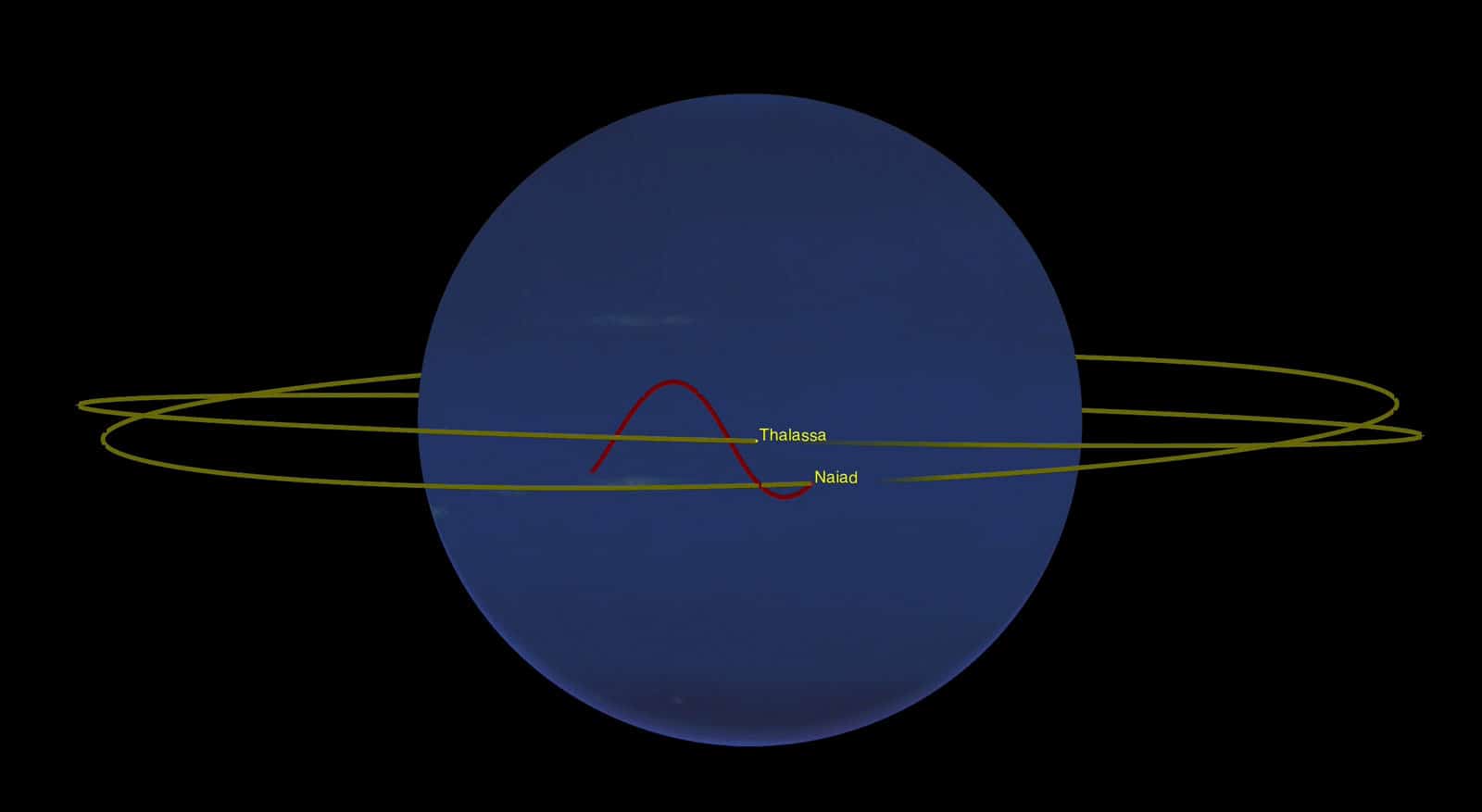

Too much is unknown, most importantly the precise mechanics of how energy from the moons' orbits gets transfered down to Neptune. Jupiter is the fifth planet from the Sun and the largest planet within the solar system.
#Neptunes moons software
It's not clear how long the two little moons, much smaller than Earth's and influenced by the gravity of a much larger planet, have been locked in this pattern, the researchers said. Moons Of Neptunes Software The Moons of Jupiter Screensa v.ver 1.1 The free screensaver, The Moons of Jupiter, was created by and contains 14 high resolution images of the moons of Jupiter. Then, you could zoom around to the other side of the moon (if you had a superfast vehicle) and see the twin moon pass once and then twice over the south. Despina, Galatea, Halimede, Hippocamp, Laomedaia, Larissa, Naiad, Nereid, Neso, Proteus, Psamathe, Sao, Thalassa, and Triton. We think NEREID is the possible answer on this clue. This answers first letter of which starts with N and can be found at the end of D. The crossword clue possible answer is available in 6 letters.
#Neptunes moons zip
From Thalassa's northern end, you'd seed Naiad zip overhead once before traveling over the north again on its next pass. Neptune has 14 known moons, named after lesser sea gods and nymphs from Greek mythology. This crossword clue One of Neptune's moons was discovered last seen in the Septemat the New York Times Crossword. They are, in order of distance from Neptune. Triton is the only moon in our Solar System with a retrograde orbit (orbiting in the opposite direction than its primary, Neptune, is rotating).

Triton and Proteus orbit close to Neptune Nereid is in a distant orbit.
#Neptunes moons plus
(Image credit: NASA)įor a viewer standing on either moon, the other satellite would appear to wiggle crazily across the sky as it passed. Neptune’s Regular Moons are those located closest to the planet and which follow circular prograde orbits that lie in the planet’s equatorial plane. Neptune has 13 moons, Triton, Nereid, Naiad, Thalassa, Despina, Larissa, Proteus, and Galatea, plus five smaller, unnamed moons. The point of view in this animation follows Thalassa, so it always appears to be in the center of the image, but both moons wobble relative to one another. Here is a table of Neptune's Moons with additional information.An animation shows how Naiad and Thalassa dodge one another on their nearly-overlapping orbits. There is an excellent resource for more information about Neptune's Moons on the NASA website. Particularly for the five outer moons, some of this information is conjectural, and subject to change. Triton is so much larger than the other moons that it makes up about 99.7% of the total mass of all the moons.īelow, a table lists the known moons, with information about their orbits and diameters. Unfortunately, for Triton, its orbit is decaying, and in the relatively near future, perhaps several million years, it will disintegrate, and could form a new, more distinct ring system. Triton is in a synchronous orbit around Neptune, meaning that, like our own Moon, the same side faces Neptune. Triton is Neptunes only large moon with a diameter of 2,704 km. It is the only large moon in the Solar System that has a Retrograde Orbit. Neptune has 13 known moons, though most are small and orbit closer to Neptune than its rings. It was once, possibly, a Kuiper Belt Object as it is very similar to Pluto. Proteus orbits Neptune about every 27 hours. The moon has an odd box-like shape and if it had just a little more mass it would be able to transform into a sphere. Neptune takes 164 years to orbit around the Sun once. Proteus is one of the largest of Neptune's known moons, although it is not as big as Triton. The Moons of Neptune Triton, Lassell, 1846, 2,700 km/1,678 mi, 354,800 km/220,500 mi, 5.88 Nereid, Kuiper, 1949, 340 km/211 mi, 5,513,400 km/3,426,000 mi. This leads astronomers to believe that it was captured long in the past, as virtually all natural satellites, formed along with their parent body, orbit in Prograde Orbits. Neptune is the eighth planet from the sun, and was discovered in 1846. It is a permanent eyeshadow that retails for 13.00 and contains 0.05 oz. Triton was simply referred to as 'the satellite of Neptune' until the 20th century, and its name came into common use in the 1930s. Triton, the largest at more than 2,700 km in diameter, and the one first discovered soon after Neptune itself on October 10th 1846 by the English astronomer William Lassell, orbits in a Retrograde Orbit, in the opposite direction to most of the other moons. Here are our dupes for Terra Moons Artemis, which is a moderately warm-toned, medium-dark duochrome with a metallic finish. The moons of Neptune are named for Greek and Roman water deities, which is consistent with Neptune's name, which is a reference to the Roman god of the sea. Neptune has 14 identified moons, as at September 2013, named for minor water deities in Greek mythology.


 0 kommentar(er)
0 kommentar(er)
